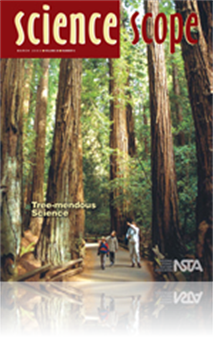All Science Scope resources
Journal Article
Tech Trek: Technologies for special needs students
You might wonder why today’s science teachers need to keep current with the latest technologies available for special education students. When you consider that more than 50 million Americans are identified as having a disability, classroom technol...
Journal Article
Tried and True: Whatever floats your boat
Ever since Archimedes ran down the streets of ancient Greece shouting, “Eureka!,” scientists have understood that a submerged body displaces a volume of water equal to its own volume. Scientists also came to realize that if a body weighed less t...
Journal Article
Outstanding Science Trade Books for Students K-12: Books published in 2002 (Science Scope)
The books that appear in this annotated bibliography were selected as outstanding science trade books published in 2002. They are intended primarily for kindergarten through twelfth grade. They were selected by members of a book review panel appointe...
Journal Article
Science Sampler: Anchor activities
What's the best way to keep students occupied when they have finished their work? An Anchor Activity Learning Station provides high-interest, educational options for students who have finished with required class assignments, labs, or investigations....
Journal Article
Embed Assessment in Your Teaching
Broadly defined, embedded assessment using performance tasks requires students to write, read, and solve problems in genuine, rather than artificial ways. It is as an ongoing, cyclical process in which teachers gather information on their students’...
Journal Article
This activity focuses on Leonardo da Vinci's tree theory, which states that the cross-sectional area of a major limb is approximately equal to the cross-sectional areas of its two offshoot limbs. Students test this theory by collecting data from 10 t...
Journal Article
Give Me Some Skin: A Hands-On Science Activity Integrating Racial Sensitivity
What’s the largest, fastest growing, organ in the human body? It’s the tough, elastic, flexible, and waterproof covering that helps protect other organs and body parts from such things as germs, heat, cold, and sunlight—skin, of course! This li...
Journal Article
Science Sampler: Accessible reading assignments
A few simple reading strategies, properly utilized, can be dynamic, learning techniques. Here the author describes how these strategies helped to engage a student with learning difficulties related to head trauma....
Journal Article
Scope on Safety: Safety is for everyone
The National Science Education Standards reject any situation where some people are discouraged from pursuing science and excluded from opportunities to learn it. In concert with the Standards are federal laws and regulations mandating equal access ...




